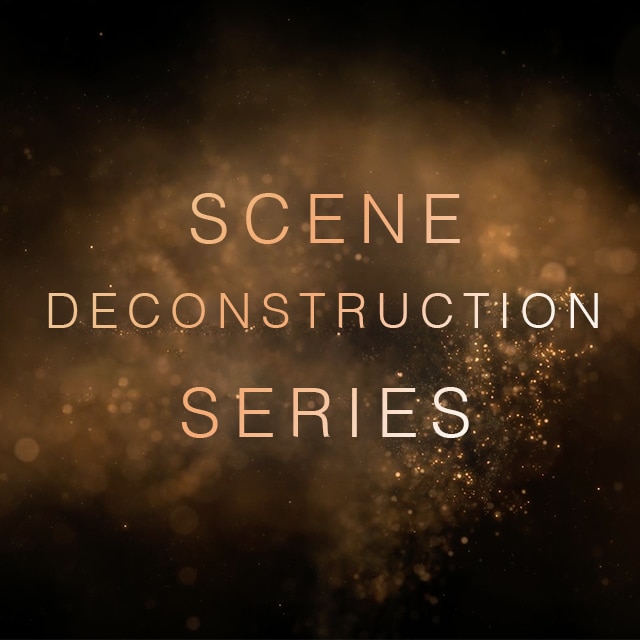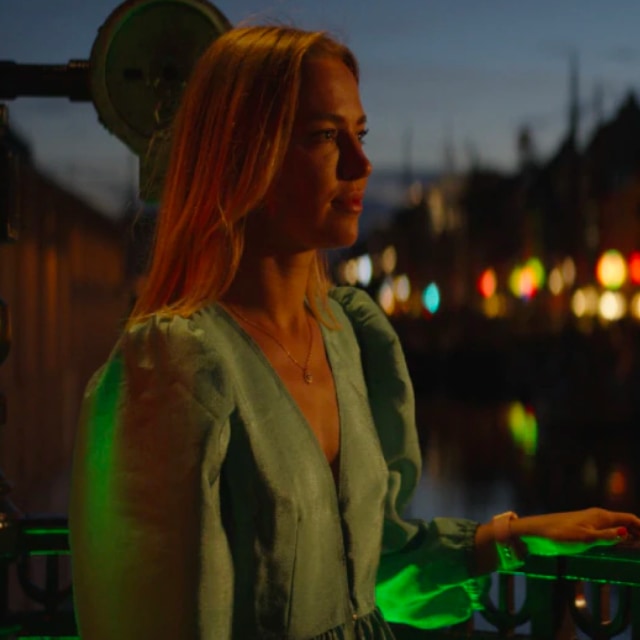
Scene Deconstruction with Matthew Lewis
Introduction
In this deconstruction we are going to look at a very different (special) film, a full length film shot in just one single take by director of photography Matthew Lewis. The film, written and directed Philip Barantini follows head chef Andy Jones (played by Stephan Graham) through ninety minutes of his chaotic life in his restaurant on one of its busiest nights of the year. Boiling Point was nominated for four BAFTA awards, including Best Leading Actor and Outstanding British Film of the Year with a BBC spin-off series following in 2023.
Matthew started taking photographs as a child and through this he discovered his passion for imagery. He studied Film and Television at university and soon got a job as a camera assistant. Barantini had been an actor in one of Matthews graduation films and the two started collaborating on some short film projects. This evolved into a creative relationship that would lead to them working on several TV shows and movies.
Please note in this video the Sony CBK-3610XS VENICE Extension System is referred to by an unofficial nickname ‘Rialto’. Apologies for any confusion.
Scene Deconstruction: Key Insights
- Meticulous planning and choreography are vital if a long single take is going to work smoothly.
- Variations in the lighting colour palette for different rooms can be used to create unique atmospheres for each area.
The Restaurant Scene
As Boiling Point was to be shot in a single take a huge amount of planning were required. The entire shot had to be carefully planned out and choreographed to ensure that the actors, camera and crew would all be in the right place at the right time. There were extensive on set walk throughs and rehearsals to get everything dialled in, to make sure that the camera would land in the right position with the right framing for each moment in the script.

There are many very different areas in the restaurant, and this is where the viewer becomes connected with many of the characters. A key aim was to show the human side and to portray the vulnerabilities of the cast.
Lighting was a challenge for Matthew, different areas had very different light levels and a lot of time was taken during the walkthroughs and rehearsals to get the lighting right. Changing a light for one part of the take could have a negative effect on another, a bit of back light needed for one angle could become a challenge for another. To ensure that the main characters always stood out from the background, key framing points were chosen throughout the take and the lighting finessed around these moments.

A small section of the film’s extensive camera movement and lighting plan.
The Argument Scene
This part of the film goes deeper into some of the personal conflicts between different members of the restaurant staff. It leads to a heated argument and ends with the maître d’ storming off into the bathroom in tears. As the argument develops, Matthew follows the dialog with the camera, panning between the maître d’ (Beth) and Chef (Carly). Matthew placed the camera very to Beth so that the viewer sees the intensity of the argument from her point of view.


To create a distinct difference between the front of house and back of house, Matthew used quite different colour palettes. He wanted the front of house to feel warm and atmospheric. Then he wanted to create a sense of some of that warmth spilling into the front of house kitchen area. This was achieved by using warm tungsten lamps along with the glow of the heat lamps that were already in the kitchen area.

For the back kitchen Matthew opted for a very different much cooler, gritty look with a hint of green. This helped to make this area feel more uncomfortable and an almost unpleasant place to be compared to the front of house. Much of this look came from the fluorescent light tubes in the ceiling of the back kitchen.

To control the light in the restaurant they had a range of different lamp shades for the practical lights. These shades were used to control the spill. In some areas they replaced the original light fittings with more controllable fixtures and many of the lights were on dimmers so that the light levels in different areas could be subtly brought up and down during the shot as needed.

Throughout the rest of the location Matthew says that they added around four lights that weren’t practical’s. These included a Jem Ball (round soft lantern type light, similar to a china ball) to light the rear exterior of the restaurant and a couple of tungsten Fresnels to add some texture though the windows.
“It’s amazing what you can get away with by moving a hanging bulb across very slightly,” Matthew comments, “all of a sudden you have shape to someone’s face rather than panda eyes.
“I managed to find a frame that I could only get to at one point in the script, this lovely two shot from behind them which I always wanted to do, and it was great that we could put this here when she’s saying that Alastair Skye, the chef, is going to arrive as you can see into the restaurant and it looks oppressive.”

For this shot, the positioning of the actors had to be perfect otherwise the framing wouldn’t work. The camera is behind the bar, looking out into the restaurant. Then the camera rapidly follows Carly as she moves from the front kitchen to the back kitchen creating a great deal of energy and momentum. Here she discovers that another staff member (Jake) isn’t washing the pots and pans as he is supposed to be.

Sometimes you have to invent action to get the camera into a certain place
DoP Matthew Lewis
Adding extra bits of action allowed Matthew to move the camera from one key shot to another, helping to seamlessly join different parts of the main storyline. In this case, the camera now follows Jake out from the back kitchen into the front kitchen where we see him collecting pots and pans. As the camera follows Jake, Matthew moves the camera from behind the bar to in front of the bar and then crabs along the bar until it reaches the reverse of the previous over the shoulder two shot. The shot feels spontaneous but was in fact very carefully planned and choreographed.

(1) Follow behind (2) Camera move outside the bar (3) Crab left (4) Transition into Two-shot.
Walnut Oil Scene
A customer badly allergic to nuts is suffering from anaphylactic shock and struggling to breathe. Head chef Andy wants to know who is to blame for serving this customer nuts, so he gets all the staff together in the back kitchen.

This was a particularly challenging part of the film for Matthew. The camera needed to be able to see all of the staff but also be able to focus in on head chef Andy – as he is clearly panicked by the whole situation. Placing the camera close to Andy helps the audience to see and understand what’s going on from Andy’s point of view. To emphasise the tension, Matthew shot this scene a bit freer, sometimes with the camera at a tilted dutch angle.
Eventually we find out that staff member Camile has put walnut oil in a dressing and, at this point, Matthew moves the camera back from her to reveal more of the staff in the room as her world comes tumbling down. The camera move creates a sense of desperation.

In another part of this scene there is a fight and, to help draw the audience into the shot, Matthew adds a lot of extra camera shake and movement to give a sense of being directly involved in the fight.

The film was shot with a Sony VENICE camera using a 29mm Zeiss Supreme lens. Matthew used the VENICE Extension System (CBK-3610XS) extension unit to separate the camera head from the main body. This was one of the key things that made shooting such a long single take possible. It allowed him to wear the main body of the camera on his back and then have the much smaller and lighter VENICE Extension System suspended from a Serene arm on an Easy Rig. This allowed for a very mobile and fluid shooting style while spreading the weight of the camera more evenly. There was much less weight on his arms than there would be with a traditional handheld camera.
The whole thing was on the [VENICE Extension System], honestly [it] made such a difference to how I could move the camera… It was so perfect for what we needed.
DoP Matthew Lewis

For monitoring, Matthew placed two small monitors mounted at 45 degrees angles to the VENICE Extension camera head so that he could operate with the camera slightly to one side or the other, providing much greater flexibility for different angles and framing.

For the part of this scene outside the front of the restaurant there were a lot of festoon bulbs but Matthew also added a 5K lamp to fill in a little bit just where it was needed. This along with the blue flashes of light from the lights on the ambulance worked really well.
Matthew also feels that being able to shoot using the VENICE camera’s upper base ISO of 2500 was essential for the shoot.
“If 800 ISO had been our base we would have really struggled,” Michael says. “It’s amazing how little light the (practical) bulbs give off. With a cinema camera you normally need more than just practical’s but we managed it because we had a sensitive sensor that could handle it.”





